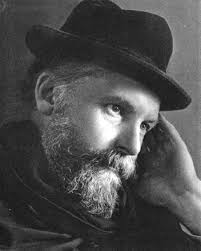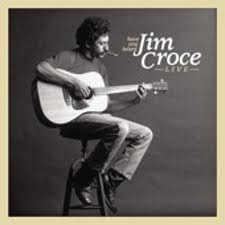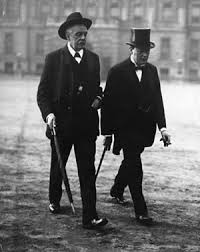|
home | what's new | other sites | contact | about |
||||
|
Word Gems exploring self-realization, sacred personhood, and full humanity
The Cross-Correspondences
This area of afterlife-research was designed and implemented by persons in the Spirit-world. Their purpose was to provide, what they hoped would be, unassailable evidence for the survival of human consciousness.
What are the "cross-correspondences"? Allow me to offer an over-simplified example; the following once helped me to begin to understand, and so I offer it to you. Think of an ordinary sheet of paper. On the paper is a message you've written, filling the sheet. Now, take the sheet and tear it into four equal pieces. Next, let's say that the four pieces are given to four friends who live some distance from each other. Each of these individuals now possesses a portion of the message; however, without the complementing three parts, the message will remain incomprehensible to each individual recipient. But, we're just beginning to muddy the waters. You wrote the message in a foreign language; but, not just any foreign language but a "dead language," ancient Greek or Latin. This means that only a relatively small number of people in the world could read your message even if they had all four parts. But we're not done. Even if they could read the words written in ancient Latin, their meaning would still likely escape them because your message is laced with runic and esoteric quotations from obscure, ancient texts containing virtually indecipherable poetic metaphors linked to forgotten cultures. You've just entered the highly inaccessible realm of the "Myers Cross-Correspondences." Dr. Frederic Myers (1843-1901) was a Professor of Classical Languages and founder of Britain's Society for Psychical Research.
He devised a plan which he hoped would offer incontrovertible evidence for the afterlife. Upon passing over, it seems, he began sending messages to, not one but several, psychic-mediums in various parts of the world. Each received a portion of the message, often delivered in a "dead language" replete with references to classical literature. The entire message of this transmitted information could be interpreted only by assembling its parts.
Did Myers succeed in offering incontrovertible evidence for the afterlife? In a sense, he succeeded too well. The messages kept coming from Myers (and later, also, from others on the other side who desired to contribute) over many years and would eventually fill many volumes. Virtually no one has inspected the vast entirety of these communications.
Professor Archie Roy, however, devoted a few decades - most of his life - to the interpretation of the massive corpus of the Myers Cross-Correspondences; which, by the estimation of many, constitutes a most significant offering of afterlife evidence.
Is there another more accessible example of cross-correspondences?
The Palm Sunday Maiden There is a case, one most touching, worthy of mention. It concerns a love affair between Arthur Balfour, a British Prime Minister (1902 - 1906), and the love of his life, Mary Lyttleton.
In 1875, as young adults, they had agreed to marry, but before the wedding Mary died having contracted typhus.
Mary is known as the "Palm Sunday Maiden," a reference to the day she passed on.
Arthur, in grief, never married; further, as a very private man, he did not disclose his personal devastation, which would not become known until much later in life, even posthumously.
Arthur Balfour with Winston Churchill My account here of their love affair, and that which transpired, must suffer severe abbreviation; however, the salient aspects, in my opinion, are these: Mary, from the other side, initiated an effort to reach Arthur - not an easy undertaking as Arthur, a paranormal-skeptic, steeled himself against afterlife evidence. Persisting and sending messages through multiple psychic-mediums, her own reduced version of "cross-correspondences" spanned many years. Eventually, by offering intimate details of their lives, she was finally able to convince her doubting lover that, in fact, it was truly she communicating with him.
While it is not usual - though often very difficult - for the discarnate to send a message to earthbound loved ones, Mary's attempts strike me as particularly intense and purposeful. She would not give up in her quest to contact Arthur. She persisted over several years. Those who knew her well seemed to perceive the hidden cause for her tenacity of purpose. Family members surmised that Mary had not fully realized, nor admitted, to herself, the extent of her attachment to Arthur, until it was too late. It seems that she had not told him, made plain, just how much she loved him; a level of consciousness, which, in the next world - where one cannot easily escape truest intentions of the heart - now included an element of desperation; this, came upon her suddenly, but only when she found herself jettisoned into the "real world."
Michael Tymn has also written of "The Palm-Sunday Maiden"
Editor's note: The testimonies of those who knew Mary and Arthur differ somewhat regarding which of the lovers was the less forthcoming. The truth seems to be that each had failed, to one degree or another, to be entirely honest in terms of revealing the extent of his or her love. However, now, with one party unreachable on the other side, the former reserved demeanor crumbles away and is transformed into soul-searing desperate attempt to reach the Beloved.
Arthur James Balfour is most remembered as a British statesman, primarily as the Prime Minister of the United Kingdom from 1902 to 1905, but he is also remembered for one of the most intriguing love stories on record, one documented in what is called the Palm Sunday Case... it seems like a good time to recall that case from the annals of psychical research as recorded in the archives of the Society for Psychical Research in England (SPR) and further discussed in some detail by Professor Archie Roy in his book The Eager Dead and by Professor David Fontana in Is There an Afterlife? The other half of the love story was Mary Catherine Lyttelton, who went by the name May. Arthur and May met at a ball at Hawarden Castle, the home of William Gladstone, then the Prime Minister of the United Kingdom, at Christmas time of 1871. May’s fiancé had recently died from tuberculosis and, although Arthur was immediately attracted to her, he hesitated to intrude upon her grief. They became close friends, however, and shared many interests over the next three years. It was not until about January of 1875 that Arthur declared his love for May. He had plans to propose marriage to her on his next visit when she died of typhus on March 21, 1875, Palm Sunday, at age 24. While Arthur lived another 55 years, transitioning in 1930 at age 83, he never married, and he is said to have spent every Palm Sunday visiting Lavinia, May’s sister, and her husband in a day of remembrance. Balfour, often referred to as AJB, was born in Scotland, received his M.A. from Trinity College, Cambridge, and was the 1st Earl of Balfour. He held a number of government positions before serving as prime minister and then as foreign secretary from 1916 to 1919. He was a fellow of the Royal Society and its president in 1904. He served as president of the SPR in 1893. His obituary in the New York Times read: “Lord Balfour was a statesman almost in spite of himself. By inclination he was a philosopher ... the thinker, the cultural gentleman of leisure, spending his life among the books and music he loved and knew so well.” He wrote several books or essays on philosophy. In a letter to a friend whose son had been killed in the Great War, he wrote: “For myself I entertain no doubt whatever about a future life. I deem it at least as certain as any of the hundred and one truths of the framework of the world…It is no mere theological accretion, which I am prepared to accept in some moods and reject in others. The bitterness lies not in the thought that those I love and have lost are really dead, still less in the thought that I have parted from them forever: for I think neither of these things. The bitterness lies in the thought that until I also die I shall never again see them smile or hear their voices. The pain is indeed hard to bear, too hard it sometimes seems for human strength. Yet, measured on the true scale of things it is but brief.” As for May, Dame Edith Lyttelton, her sister-in-law, wrote: “Not an exceptional beauty, but love and sympathy streamed out from her. She was one of those people who charge the atmosphere with life when they appear.” She was said to be an accomplished pianist and enjoyed the musical evenings that were a big part of Victorian family life. She especially took delight in joining those who sang Handel’s oratorio songs or lighter pieces. During May’s final moments, Lavinia was present and later reported that during a delirious outburst, May imagined herself at the pre-Christmas Ball at the Gladstone’s house at Hawarden, where she first met Arthur. “Her fevered brain telescoped that meeting into a confused collage of memories. ‘Oh, he does interest me more and more…I do wish he had a little more backbone [to say he loves me] – perhaps it will come with age. He has so many good qualities but also such peculiarity…Oh, to see him in a ballroom is a sight in itself.’” … To Lavinia, it was clear that May and Arthur were meant for each other. She saw that, in spite of his hesitancy to propose, his whole heart was May’s and that May was prepared to return his love. Arthur was heartbroken. He wrote to his friend Edward Talbot: “I used to dream, knowing the sad story of her life, that perhaps with me her wearied heart might have at last found rest…but God has provided a far more full and perfect calm; and I do feel how selfish are the longings…for the ‘might have been.’ In the meantime, I think – I am nearly sure – that she must have grasped the state of my feelings toward her…and now, perhaps when she watches the course of those she loved who are still struggling on earth, I may not be forgotten.” It was on Palm Sunday of 1912, 37 years after May’s death, that Winifred Coombe-Tennant, an automatic writing trance medium, received a message indicating that May was attempting to let Arthur know of her continued existence. (As a magistrate in her county and later as a British delegate to the League of Nations, Coombe-Tennant kept her mediumship a secret from all but a few people, using the pen name “Mrs. Willett” in her automatic writing ventures.) The communicating “intelligence” writing through her hand revealed that May had unsuccessfully attempted to contact Arthur through several other mediums, as early as 1901. The other mediums included those well known to the SPR and investigation by SPR researchers resulted in the so-called Palm Sunday Case, one in which fragmentary bits of information through seven different mediums were pieced together, all pointing to attempts by Mary Catherine Lyttelton, referred to as the “Palm maiden,” to communicate with Arthur James Balfour, referred to as the “Knight.” Most of the spirit communication came from deceased researchers, including Frederic Myers, Edmund Gurney, and Henry Sidgwick, the three men credited with founding the SPR, in what have become known as the “cross-correspondences” – various messages when pieced together resulted in a complete and sensible message. The purpose of this, it was explained, was to offer evidence that overcame the telepathy and super-psi theories often suggested to defeat spirit communication. May was cooperating with them in the experiment and found it difficult to make direct contact through Mrs. Willett. When Arthur received word of the communication, he was reluctant to sit with Mrs. Willett and very skeptical. However, at the urging of his brother, Gerald, he did visit Mrs. Willett and became convinced that it was indeed May who was communicating through her. Especially evidential was mention by May of a silver case that Arthur had made in which to keep a lock of her hair. May even cited the inscription on the case, taken from 1 Corinthians about the mortal putting on immortality. Reference was also made to a photo of May holding a candlestick which Arthur treasured. Arthur deemed it highly unlikely that Mrs. Willett would know anything about the silver case or the photo. On February 15, 1958, 28 years after Arthur’s death and two years after the death of Mrs. Willett, Geraldine Cummins, perhaps the most famous of automatic writing mediums, was receiving messages for a couple who had known Mrs. Willett and were familiar with the story of Arthur and May. Mrs. Willett told them through the hand of Miss Cummins that she had encountered a friend of Arthur’s on that side who was in contact with Arthur and May, who apparently were at a higher level than they were. the romantic, one, 'anti-self' “I am free to tell you of their intrinsic inviolable unity,” Mrs. Willett communicated. “They shared the one anti-self, while consciously separated by her early death. So many years parted after her passing. An emptiness, a dissatisfaction continually then for him. No joy. He merely put in time with hard and varied mental work. Such faithfulness, such patient waiting. Then at last, after sixty years, or fifty by the clock, the meeting at the other side of death when his old age dropped from him like a ragged garment. But oh! It was well worth while to wait so long for that event. If they had not been parted by her death, he would never have worked with that industry, that brilliance that made a name for him. Work was his escape from intolerable memory. Oh! He was so idle before she passed. “If she had lived, she would have been his all-absorbing playmate, life brilliant in the sunshine of just being, instead of doing, instead of a rough path each followed solitarily of struggle, and in his case of fine achievement. But hers was also fine; they tell me that she remained waiting, waiting at the border for him, returned from the higher level, at what sacrifice! A world so tempting beckoning, but she ignored it. She put all that away from her so as to meet an old man’s soul. Therefore it need hardly be said that she was the first to greet AJB when he came home to her. A lonely man throughout his life until then. They have gone to that other level together. Happiness incomparable for them…
|
||||
|
|




